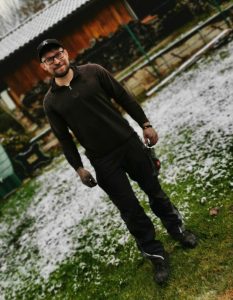Something many people do not know: Chimney sweeps not only bring good luck, but also contribute to preventive fire protection with their work.

I was allowed to interview our chimney sweeper, Stefan Wudi, a little about his profession and the associated activities. In general, I was able to ascertain that the profession is incredibly varied and dynamic, as the technologies in the energy and heating industry are also constantly developing.
Chimney sweeps inspect heating, exhaust and ventilation systems and similar equipment for operational and fire safety. In doing so, they comply with building and environmental protection regulations and determine energy saving potentials.
Here is a good video on the subject of heating.
And for those interested, you can find the German nationwide sweeping and inspection regulations here: KÜO-2022.
Chimney sweeps carry out fireplace and fire prevention inspections as well as immission control measurements, arrange for the elimination of any defects found and document their measurement, test and work results. This inspection is important to prevent the operation of fireplaces without prior notice, which could overload the chimney shafts and endanger the neighbours. If the chimney shafts are not suitable for a fireplace, carbon monoxide poisoning and fires could occur, as the exhaust gases cannot be completely extracted. Care and responsibility should therefore be among the virtues of every chimney sweeper.
By the way: § 14 of the Chimney Sweep Trade Act sets the intervals for the fireplace inspection:
It has to take place twice within a period of seven years; at least three years must elapse between the dates. However, this is only a regulation on how often a fireplace inspection must be carried out at least. Irrespective of these mandatory intervals, a fireplace inspection must always be carried out if there are significant changes to the combustion systems.
This concerns, for example, the installation of a new fireplace. However, this also includes significant changes in the usage behaviour: If, for example, you initially operate a wood-burning stove only at the weekend, but later change over to daily use, a fireplace inspection is necessary!
Chimney sweeps clean combustion systems and smoke outlets and remove deposits from ventilation systems. Chimneys that are located in or on buildings are cleaned so that the chimney cross-section remains large enough for the flue gases to escape. This discharge can be reduced (even to the point of clogging the chimney) by leaves, birds, hornets and wasps’ nests or – in the case of very old chimneys – by age-related damage to the chimney. If this leads to an exhaust gas backflow, toxic exhaust gases (carbon monoxide) can enter the room where the heating system is located.
Caution: This is especially important for weekend or holiday homes where heating is not regularly provided.
And here once again the urgent advice for all stove owners to stick to the regulations regarding the burning material. If no suitable material is used, the fireplace can burn by contaminating it. This is called a “gloss soot” and is a deposit on the inside walls of the fireplace that does not belong there. These include soot residues from “normal” fuels and other materials that are burned illegally, especially plastics or materials with tar content. It will become dangerous if the residues in such a clogged chimney suddenly ignite at high temperature, a situation which unfortunately happens again and again.
Stefan Wudi told me that he has to remove about 20 tar deposits in chimneys per year by controlled burning out.
The fact is that the chimney sweeper, who is responsible for regularly sweeping and monitoring the chimney, is always liable for chimney fires caused by a tampering. Only very exceptional circumstances could exceptionally justify the blamelessness of the chimney sweep (or his vicarious agent) in the sense of § 1298 ABGB.
However, the responsibility for the recurring execution of the chimney sweeping work was transferred to the owner. According to the new legal situation, the owners have the obligation to have the prescribed sweeping and inspection work carried out by a licensed chimney sweeper in due time. The authorised district chimney sweep then monitors this within the scope of sovereign activities.
During our conversation I also found it interesting that there are still only a few women in this profession. In Stefan’s school class there were only four out of a total of 25 vocational students. And I liked the fact that he answered my question without hesitation, whether he would learn this profession again if he had to choose again, clearly with “Yes”. It is a good feeling to be supervised by such a positively convinced chimney sweep.
